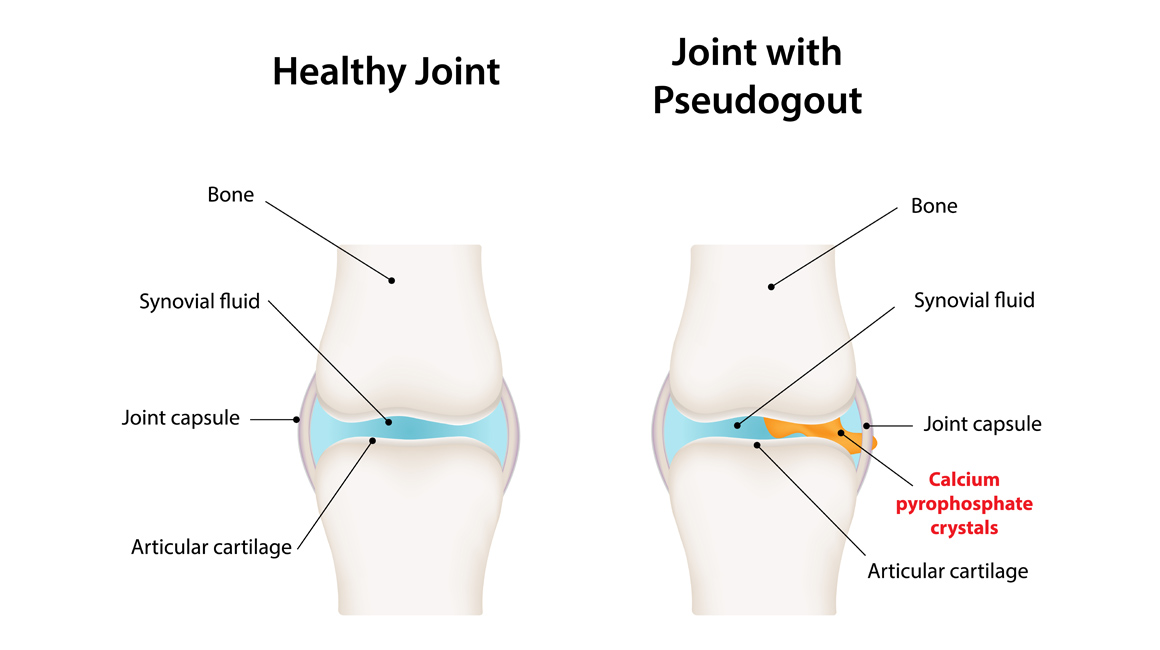
Pseudogout
Pseudogout or calcium pyrophosphate deposition (CPPD) is a type of arthritis that can cause symptoms similar to gout. However, in CPPD, a different type of crystal, called calcium pyrophosphate, triggers the reaction. CPPD affects about 3% of people in their 60s and about 50% of people in their 90s. CPPD can cause sudden pain stiffness, tenderness, redness, warmth and swelling in joints, which can limit activity for days or weeks. CPPD can also cause a more lasting arthritis that mimics osteoarthritis or rheumatoid arthritis.
Symptoms
You may have pseudogout and not experience any symptoms. For those who do experience symptoms, these can include a low-grade fever and join inflammation. People with chronic pseudogout experience more joint pain, deterioration of the hyaline cartilage that covers the ends of bones, and a decrease range in motion.
Causes
CPPD results from the abnormal formation of calcium pyrophosphate dehydrate crystals found in the cartilage or the joint fluid. The cause of abnormal deposits in the cartilage is often unknown, but age and genes are risk factors, and an overactive parathyroid gland may play a role.
Treatment
People with CPPD tend to be older and more susceptible to side effects of anti-inflammatory medications. Therefore, people with CPPD may benefit from seeing a rheumatologist, who can offer expertise in using such drugs and other therapies to prevent flares and control the arthritis.
Opening Hours
Monday – Thursday: 7:30AM to 4:30PM
Friday: 7:30AM to 3:30PM
Saturday – Sunday: Closed

